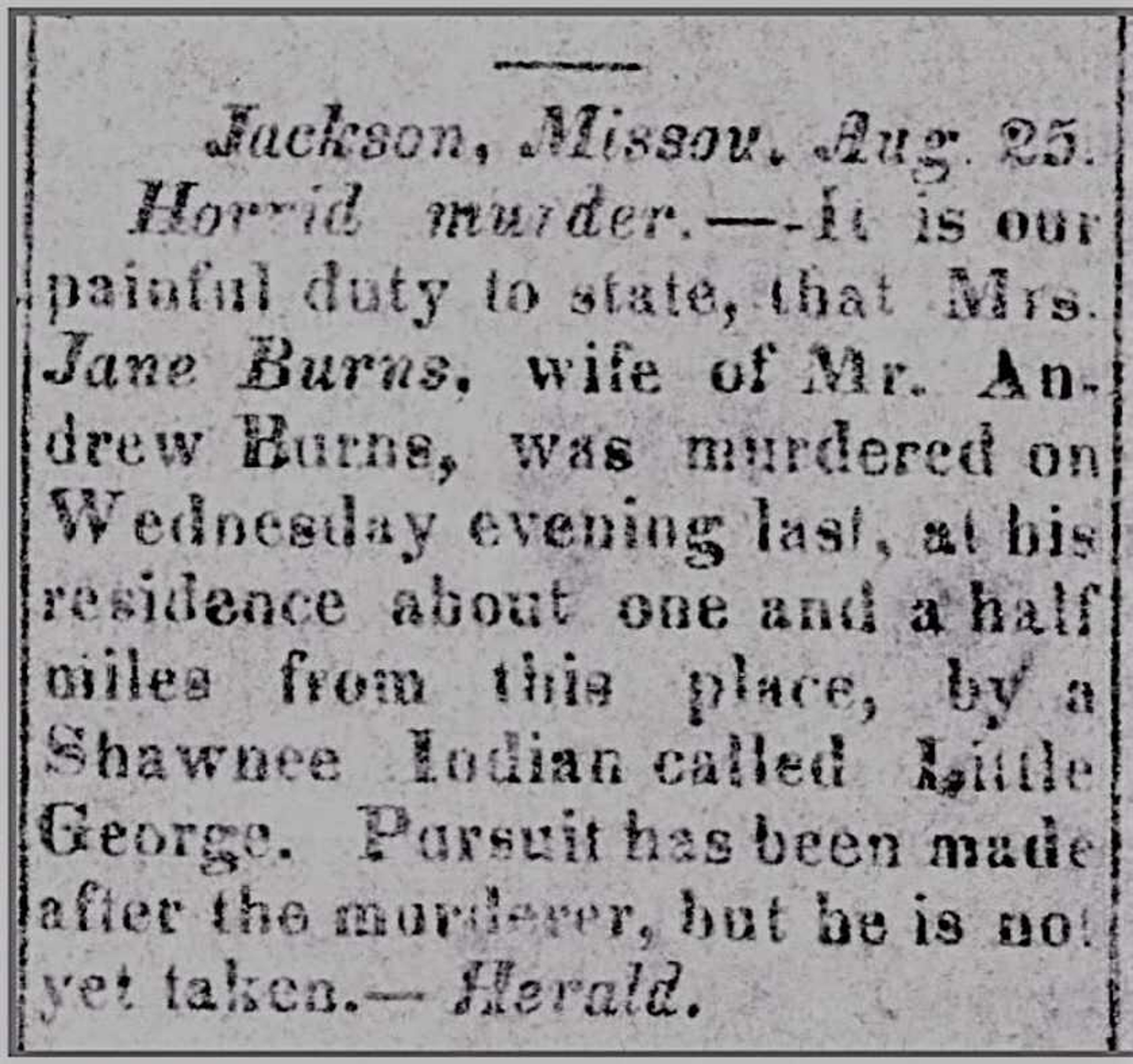A 200-year-old crime: The murder of Mrs. Jane Burns
Two hundred years ago this week, a sordid series of events played out in Cape Girardeau County, centered around the murder of Mrs. Jane Burns, wife of Andrew Burns. Andrew Burns and family first settled in March 1803 on an 890-acre land grant near Brushy Prairie in the New Madrid District. Burns cleared about four acres, according to testimony given to the Board of Land Commissioners in 1808 by William Cox, a neighbor. The family in 1803 consisted of Burns, his wife and five children...
Two hundred years ago this week, a sordid series of events played out in Cape Girardeau County, centered around the murder of Mrs. Jane Burns, wife of Andrew Burns. Andrew Burns and family first settled in March 1803 on an 890-acre land grant near Brushy Prairie in the New Madrid District. Burns cleared about four acres, according to testimony given to the Board of Land Commissioners in 1808 by William Cox, a neighbor. The family in 1803 consisted of Burns, his wife and five children.
Burns purchased two land tracts totaling 540 acres in Cape Girardeau County in 1807, originally claimed by Jonathan Foreman. The land is on Hubble Creek, about 1 1/2 miles due west of the center of Jackson. The family settled on this land and held it until they sold part of it in 1818. A man named Thomas Boyce lived on part of this land, presumably renting from Andrew Burns.
Apparently, there was bad blood between the Burns family and Thomas Boyce. Andrew and Jane Burns brought suit against Boyce in March 1819 for slander. The case went to a jury in April 1820, and they decided against Boyce. The court fined him damages and costs of $1,000. Boyce was unable to pay and spent time in jail.
Four months after Boyce's trial, on Aug. 16, 1820, Mrs. Burns was home alone. The events that ensued are lost to history, but we know a Shawnee, called by the local people "Little George," from the Apple Creek village came to the cabin at one point. He killed Mrs. Burns and fled. Once discoverers of the crime raised the alarm, the authorities demanded that the head man of the Shawnee village deliver the perpetrator.
The Shawnee leader, possibly Wapapilethe, dispatched a party to find him. He had fled to Arkansas, and the pursuers captured him on Crowley's Ridge. They killed him, decapitated him, and brought his head to Jackson in a sack. According to Louis Houck's "History of Missouri," the head was stuck on a pole near the Burns place and remained there until it rotted down. The Shawnee claimed a man named Boyce hired Little George to murder Burns.
One thing is certain. Thomas Boyce had a motive to murder Andrew and Jane Burns because of the slander conviction. However, there was no evidence other than hearsay. The "hired gun" was dead, Indians could not testify in court in any event, and no one came forward with information. The State of Missouri filed no charges, and no mention of the crime appears in available records after the execution of Little George. The Shawnee of the Apple Creek village headed further west after ongoing harassment increased following Missouri Statehood in 1821. Boyce appears to have moved south to New Madrid County.
Andrew Burns sold the remainder of his land near Jackson in 1822, after he moved with many of his children to Perry County. He remarried and lived out his days near his sons.
Connect with the Southeast Missourian Newsroom:
For corrections to this story or other insights for the editor, click here. To submit a letter to the editor, click here. To learn about the Southeast Missourian’s AI Policy, click here.











